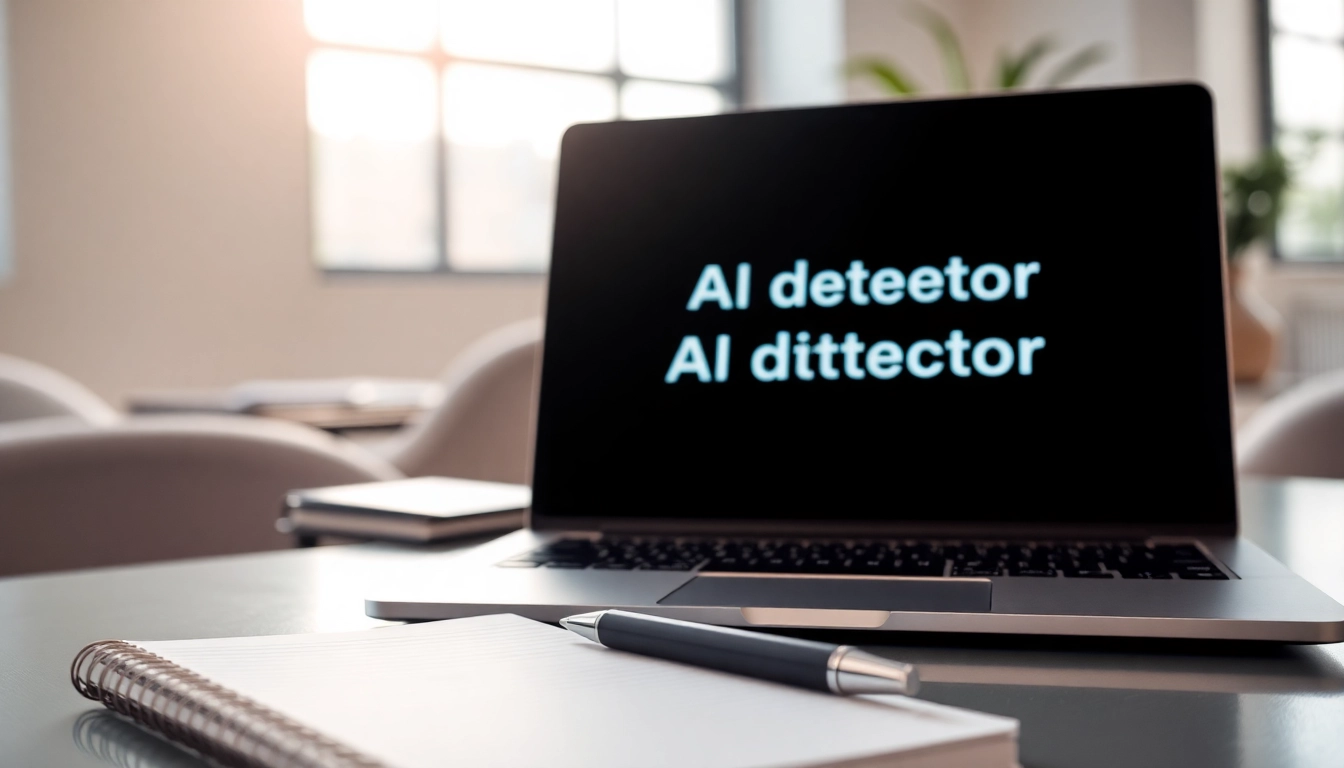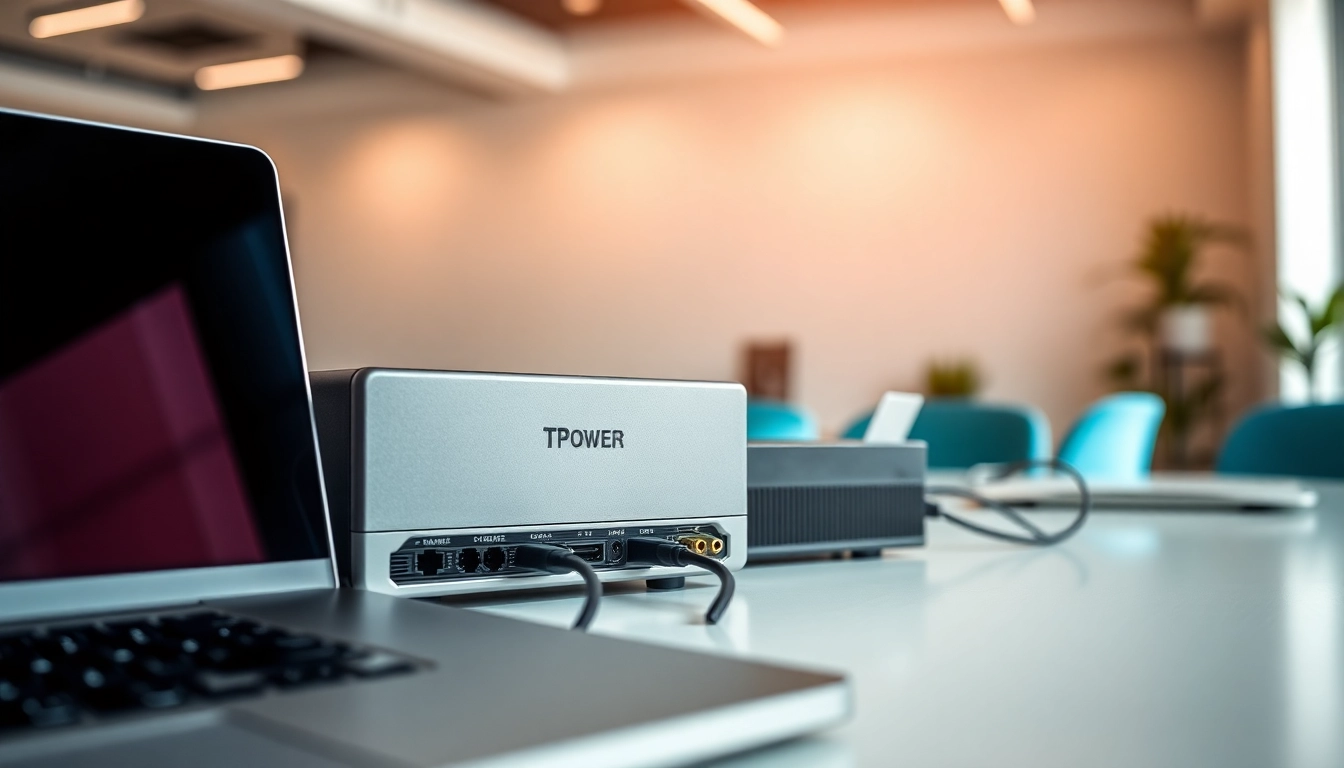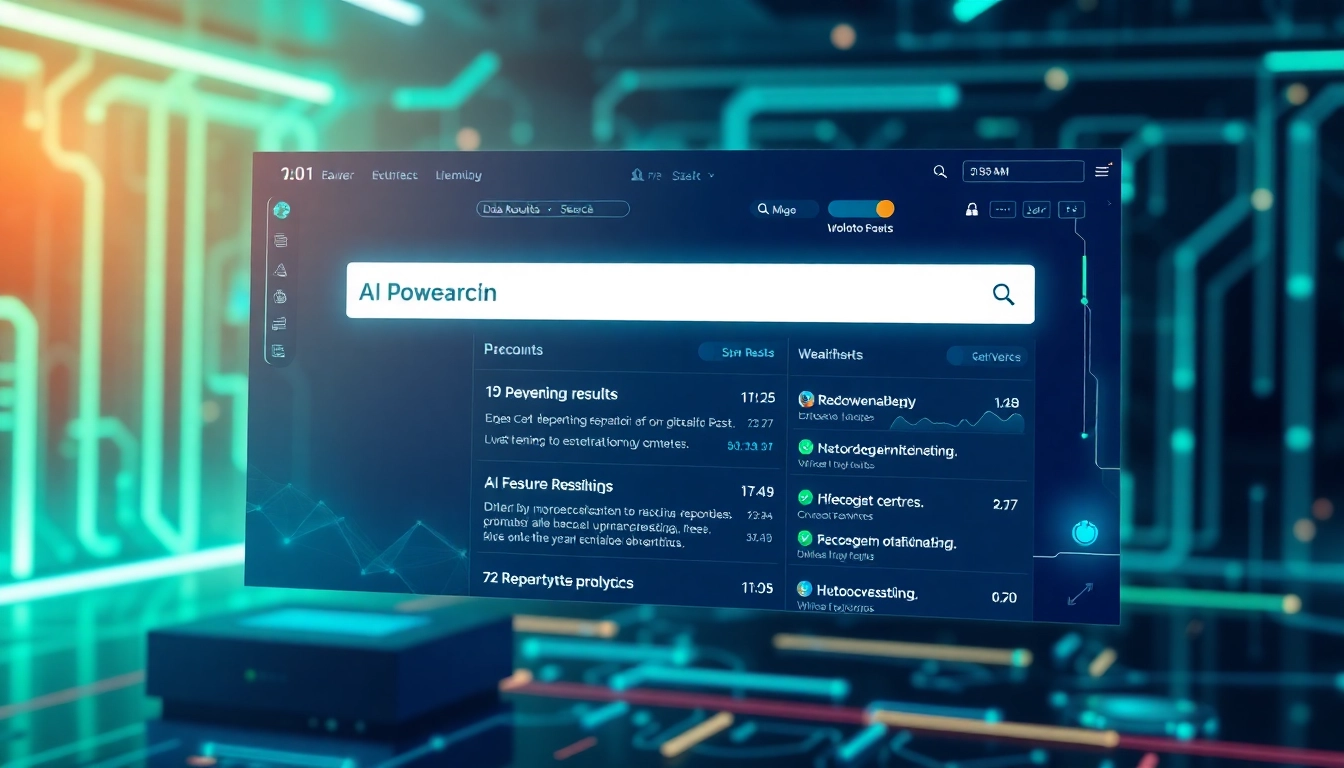Introduction to AI Detector
In today’s digital landscape, the rise of artificial intelligence (AI) tools is profound, impacting various sectors such as content creation, education, and journalism. With the growing ability of these tools to generate readable and coherent text, the necessity for content authenticity has surged. This has led to the development of ai detector technologies that can differentiate between AI-generated content and that of human authors. In this article, we will explore the intricacies of AI detectors, their significance, and the technology behind them, providing you with a comprehensive understanding of how they function and their applications in various fields.
What is an AI Detector?
An AI detector is a tool designed to identify text generated by artificial intelligence. It analyzes the linguistic patterns and structures of the content to ascertain if the text originates from an AI source or a human author. These detectors rely on diverse algorithms and models that compare the input text against known characteristics of AI-generated text. The importance of these tools cannot be overstated, especially as more platforms continue to utilize AI for content generation.
Importance of AI Detection in Content Creation
The proliferation of AI content generation tools has created a pressing need for robust content verification methods. In education, maintaining academic integrity is paramount; educators must ensure that submissions are authentic. In journalism, verifying the authenticity of a piece can preserve the credibility of a news source. Furthermore, for businesses, ensuring that the content they disseminate is original can impact branding and consumer trust. AI detectors thus play a crucial role in upholding the standards of content quality and authenticity.
Key Features of an Effective AI Detector
Effective AI detectors possess several features that enhance their functionality:
- Multi-Stage Analysis: A comprehensive analysis that involves multiple stages, examining syntax, semantics, and writing style.
- User-Friendly Interface: An accessible platform for users, often requiring no technical knowledge to operate.
- Real-Time Detection: The ability to provide instant feedback on the authenticity of the content, facilitating quick decisions for users.
- Comprehensive Reporting: Detailed insights not only about whether content is AI-generated but also suggestions for improvement.
How AI Detectors Work
The Technology Behind AI Detection
The underlying technology of AI detectors is based on advanced natural language processing (NLP). These systems are trained on large datasets that include examples of both human-written and AI-generated texts. Machine learning models, especially deep learning algorithms, are employed to discern the subtle nuances that distinguish human writing from AI-produced content. By identifying unique patterns in style, coherence, and word choice, AI detectors can effectively categorize texts.
Analyzing Text: Human vs. AI Signals
AI detectors evaluate various signals to determine text ownership. Key indicators include:
- Word Choice: AI-generated text may exhibit repetitive phrases or patterns due to the training data used.
- Complexity and Coherence: Human-written content generally displays a natural flow and complexity that AI struggles to replicate consistently.
- Grammar and Syntax Errors: While AI can produce grammatically correct sentences, it might misuse phrases or create awkward constructions that differ from native writing patterns.
Common Algorithms and Techniques Used
To achieve accurate detection, various algorithms and methodologies are employed:
- Statistical Analysis: Analyzes the frequency of certain linguistic features.
- Machine Learning Algorithms: Such as support vector machines (SVMs) and neural networks, are trained to identify and classify text types.
- Deep Learning Approaches: Utilize advanced models like transformers that have demonstrated efficacy in understanding context and features of text.
Applications of AI Detector
Educational Uses for Detecting Plagiarism
In educational settings, maintaining academic integrity is crucial. AI detectors can help educators identify instances of plagiarism, whether the work has been copied from other sources or generated by an AI tool. By ensuring originality, institutions can uphold standards and foster genuine academic growth among students.
Content Quality Assurance for Publishers
Publishing houses benefit significantly from AI detectors by ensuring that the content they produce is original and aligns with their brand’s voice. Editors can employ these tools to provide a second layer of quality assurance during the content review process. This not only enhances the credibility of published works but also protects against potential legal issues arising from unintentional plagiarism.
Compliance and Authenticity in Journalism
In journalism, the stakes are particularly high concerning the authenticity of content. AI detectors serve as an essential resource for news organizations, allowing staff to confirm that the articles they publish are credible and authentic. The integrity of journalism relies heavily on the trust placed in news sources, making AI detection a valuable asset.
Choosing the Right AI Detector
Factors to Consider When Selecting an AI Detector
Choosing an AI detector involves considering various factors:
- Accuracy: Evaluate the tool’s ability to correctly identify AI-generated content compared to human writing.
- Ease of Use: The interface should be intuitive, enabling users to operate the tool efficiently without extensive training.
- Features: Additional functionalities, such as comprehensive reporting or integration with other software, can enhance the tool’s utility.
Comparing Features and Accuracy Ratings
It is advisable to compare different AI detectors based on user reviews and accuracy ratings. A reliable tool should not only demonstrate a high detection rate but also provide feedback that helps users understand their content better. Many tools offer trial versions, enabling potential users to gauge their effectiveness before making a commitment.
User Reviews and Feedback Analysis
Customer feedback can provide invaluable insights into the performance of various AI detectors. Analyzing user experiences can help identify the strengths and weaknesses of each tool, guiding you toward making a more informed choice. Look for patterns in reviews that highlight accuracy, usability, and support services.
Future of AI Detection Technology
Emerging Trends in AI Detection Tools
The landscape of AI detection technology is rapidly evolving, with several trends on the horizon:
- Integration of AI: Newer detectors may employ their own AI technologies to continuously improve detection accuracy by learning from new patterns.
- Real-Time Applications: As AI generation grows, tools will increasingly be required to function in real-time across various platforms.
- Collaboration with Educational Institutions: Partnerships between AI tool developers and educational bodies could lead to more refined tools targeted at specific market needs.
Challenges Facing AI Detectors in Modern Content
Despite advancements, AI detectors face significant challenges:
- Adapting to New AI Models: Rapid developments in AI text generation mean that detectors must constantly update their algorithms to recognize new styles.
- False Positives and Negatives: Striking a balance between sensitivity and specificity is paramount; too many errors can shake user confidence.
- User Education: Users must be well-informed about the capabilities and limitations of AI detectors to leverage them effectively.
Enhancing Detection Accuracy with Machine Learning
Machine learning holds the key to improving AI detection accuracy. By continuously training on diverse datasets, detectors can adapt to new writing styles and nuanced patterns that emerge from evolving AI technologies. Incorporating user feedback mechanisms can further enhance the tool’s performance while allowing developers to understand user needs better.



